Climate Change. How to stop it and manage it
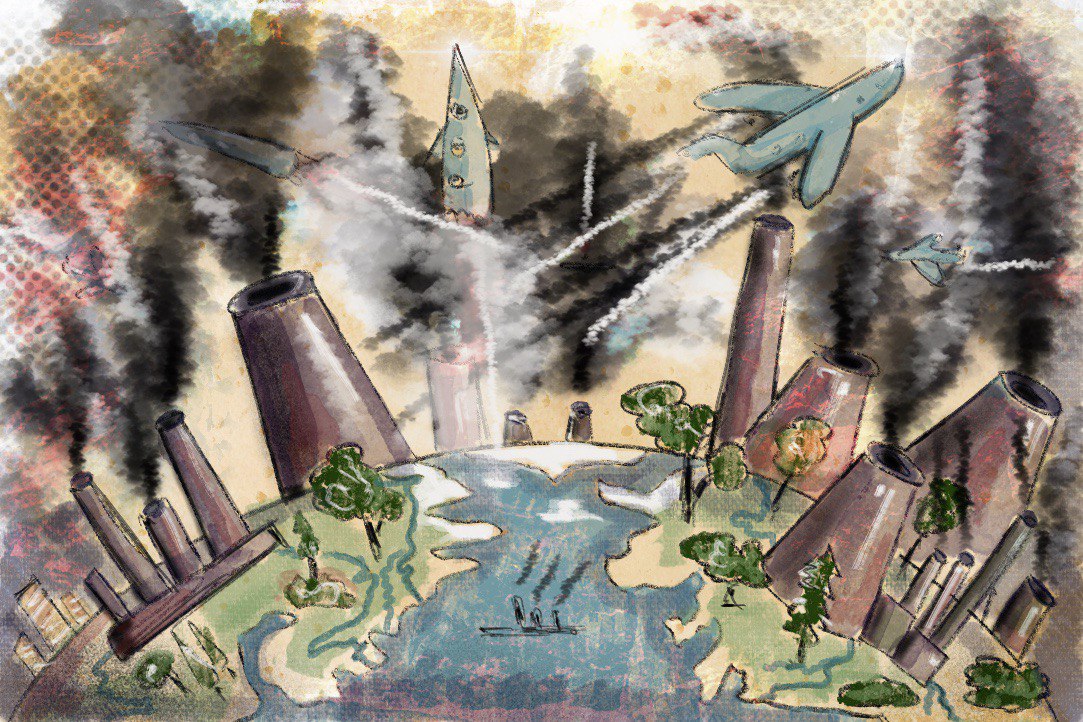
Over the last 20 years, hazardous weather has become more frequent in Russia, and the situation is only expected to worsen in the future — the world's climate is changing at an unprecedented rate due to human activity. How can we predict hazards and manage agriculture with this in mind? How are natural systems and human potential interconnected? In what areas do Russian scientists have an edge over their foreign counterparts, and why might they soon lose the ground they have gained? Experts from HSE University, the Institute of Geography, the Russian Academy of Sciences, the Russian Presidential Academy of National Economy and Public Administration (RANEPA), and Tomsk Polytechnic University answered these questions and proposed recommendations at the round table, ‘Sustainable Development in Pandemic Times: Natural Resources, Climate Change and Territorial Resilience’, held at the XXII April International Academic Conference on Economic and Social Development.
A Curse and a Panacea
For a long time, humans took from nature with very little consideration of the consequences. By the mid-20th century, this approach had caused many problems, and today the earth is on the brink of ecological disaster. Frequent natural disasters, the depletion of natural resources, and the degradation of ecosystems affect the economy and social development, cause problems in agriculture, threaten food shortages, and displace people from their homes, turning them into forced migrants.
The abundance of natural resources is not a panacea either. It is argued that having a considerable volume of them can have an impact on economic success.
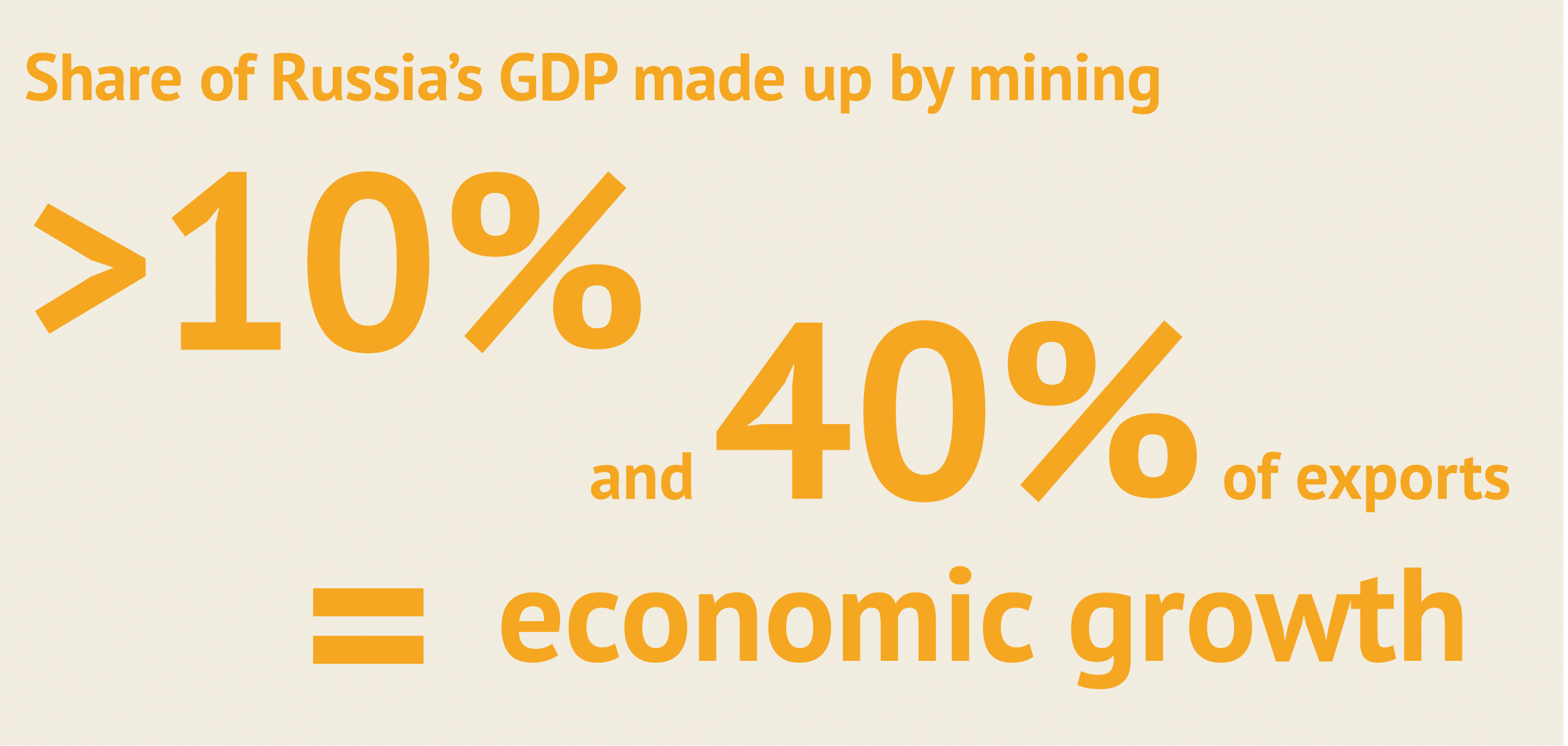
However, there is also a so-called ‘resource curse’, where that same abundance ensures not a state’s prosperity, but an extreme dependence on extractive industries.
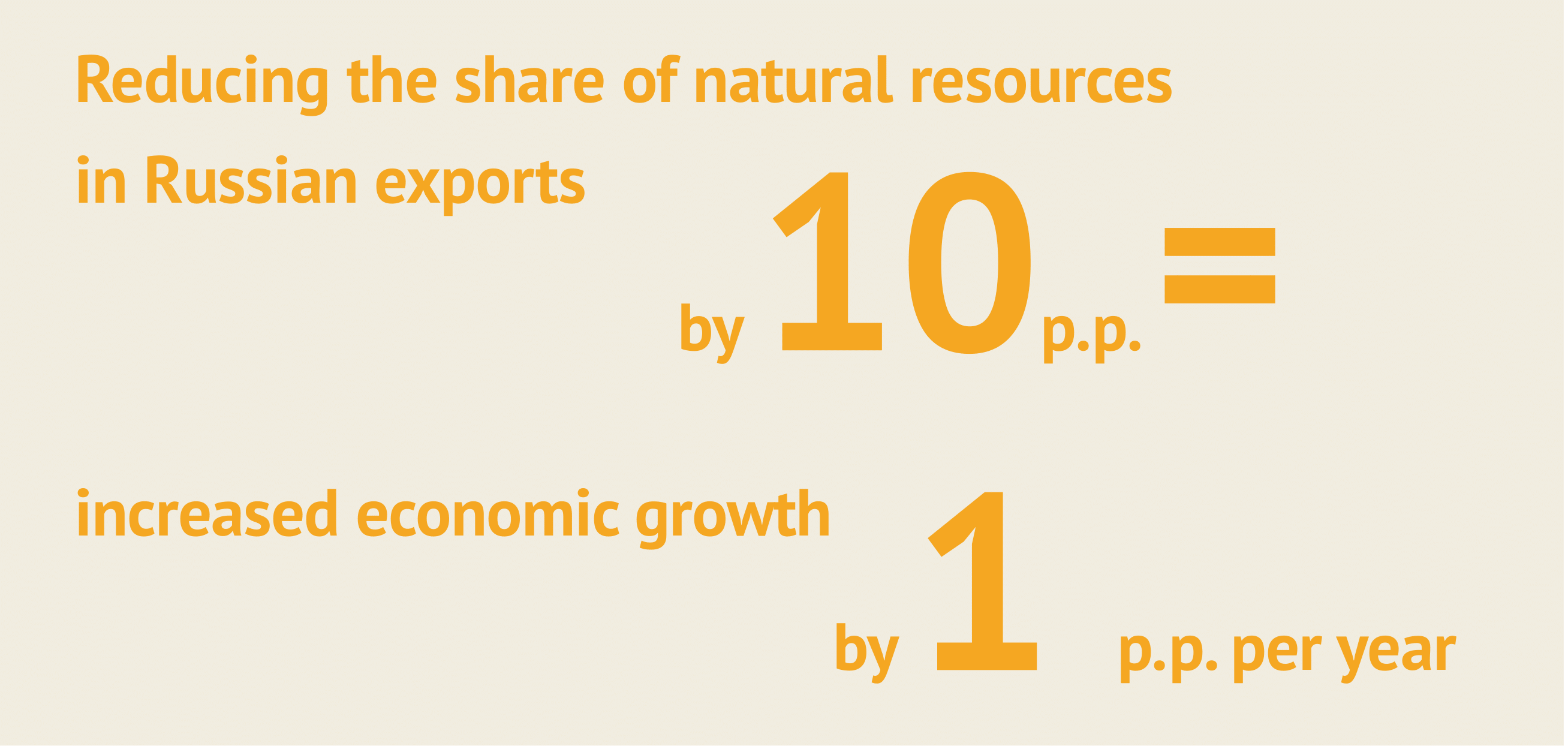
The 'resource curse' additionally hampers people themselves. A low demand for skilled labour reduces the need to invest in human capital. The state, too, does not invest amply in human capital, since it receives revenue more quickly from mining.
On the other hand, skilful dispersal of revenue from the sale of resources increases spending in the social sphere and improves a population’s quality of life. And in conditions in which property rights are protected, the judicial system is effective, and there is public accountability, the ‘resource curse’ ceases to be a problem at all.
The report was prepared by the World-class Research centre ‘Human Capital Multidisciplinary Research Centre’.
Research proves that with an abundance of resources, countries can develop rapidly. Economic progress drives improvements in human capital, which in turn is one of the main drivers of GDP growth.
Bound by One Goal
The relationship between natural wealth and economic growth is just one example of the relationship between humans and the environment. Scientists are increasingly looking at the anthropogenic impact on nature, the consequent destabilisation of ecosystems, and the resulting state of human potential, i.e. people's ability to be who they want to be, and their ability to achieve what they want in life.
On the one hand, natural factors and human potential do not overlap:
On the other hand, in the search for a balance between economy, society, and ecology, the questions of natural and climatic systems and human development are integrated within the concept of 'sustainable development'.
Trends in this kind of integration can be divided into several groups:
The iFORA big data analysis system of HSE University sheds light on which trends are currently most pronounced. Semantic and trend maps were constructed based on a comprehensive analysis of English- and Russian-language scientific articles, patents, grant applications, strategic documents, analytical reports, and media resources.
The following themes were dominant in both global and Russian agendas:
environmental protection;
transition to sustainable development;
global population growth;
increasing demand for energy;
fossil fuel extraction solutions;
structural changes in the fuel and energy sector;
research and development of clean technologies;
value shift of people and companies towards new consumption patterns.
Semantic map in English
Semantic map in Russian
Helping the Planet’s Lungs
The dangers posed by climate change are forcing the world’s populations to come together. In 2015, the UN adopted the Paris Agreement, which aims to prevent the planet’s temperature from increasing more than 1.5-2°C and to reduce net greenhouse gas emissions (taking into account sequestration by forestation) to zero in the second half of the 21st century.
From 1850-2020, the concentration of carbon dioxide in the atmosphere increased by 54%, and it continues to rise due to increased fossil fuel consumption, industrial development, transport, and deforestation. The intensification of the greenhouse effect leads to a rise in global temperatures, redistribution of precipitation, and enormous damage to ecosystems, economies, and people. Nicholas Stern's research group estimates that losses from climate disasters may constitute up to 5-20% of global GDP.
Mechanisms used to regulate emissions include carbon taxes and quotas. There are 64 carbon pricing schemes around the world. A cross-border EU carbon tax on exporting companies is expected to be introduced by 2023. This represents a significant challenge for all export sectors of the Russian economy.
At the same time, Russia has an important resource — vast areas of forestation. The country is home to the largest forested areas in the world. These forests are capable of absorbing carbon from the atmosphere and storing it indefinitely in plant biomass and soils.
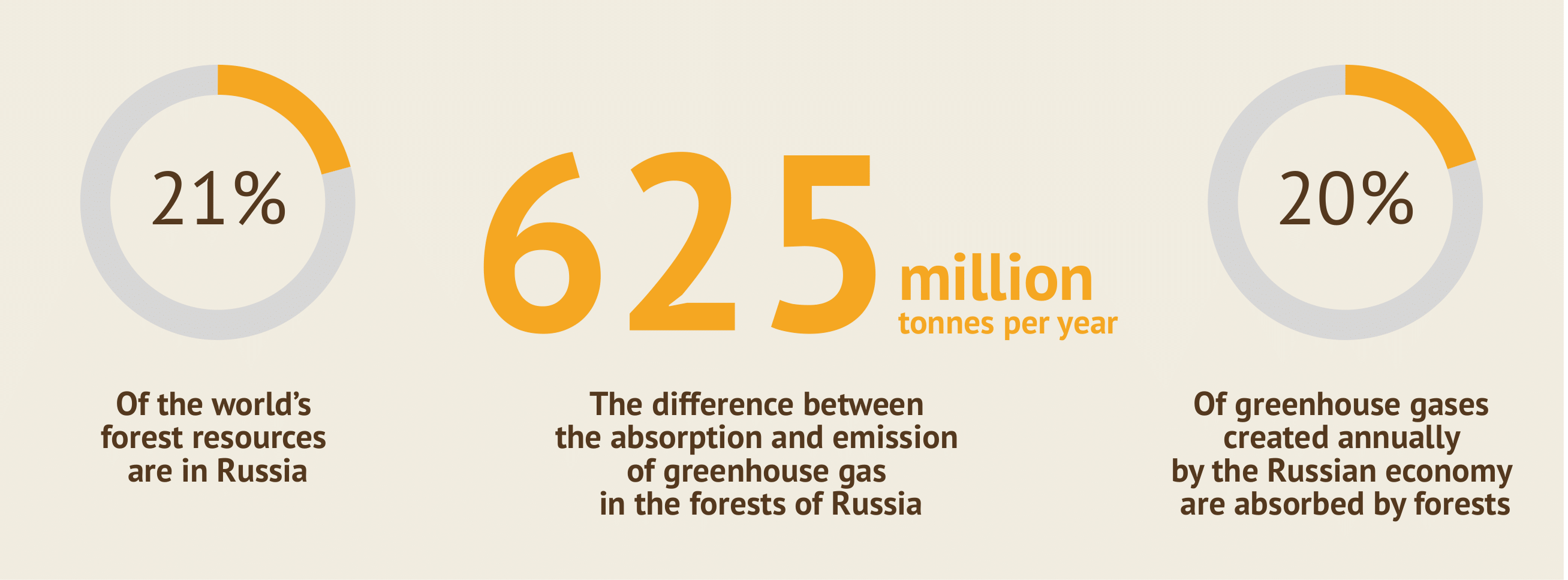
Natural landscapes have the ability to cope with environmental stresses and to regenerate and renew themselves afterward. This is a territorial resilience that humans need to learn how to manage.
In particular, they can do this through forest climate projects — comprehensive measures to improve forest management, rehabilitation, counteract land degradation, increase resilience to extreme weather events, and more.
The costs of reducing greenhouse gas emissions in the forestry sector are significantly lower than in the industry sector, and the potential for projects is large — 360-420 million tonnes of CO2 equivalent per year. For domestic companies, which could lose $3-5 billion or more annually in additional costs due to the introduction of a carbon tax, this is very significant.
There are still only a few Russian forest-climate projects. While more than 260 have been implemented abroad, there are only three in Russia:
Altai Forest-Climate Project (afforestation of agricultural land);
Bikinsky District Forest-Climate Project (forest conservation and land-use regulation in forest renting);
Terneyles Forest-Climate Project (voluntary forest conservation by the tenant).
The potential of forest land reclamation on agricultural land (e.g., establishing forest belts to protect the fertile layer) is also underutilised. The scale of carbon sequestration by protective forests is estimated to be 16 million tonnes of CO2 equivalent per year. However, their share in the Russian agrarian sector is declining and now constitutes only 1.3%.
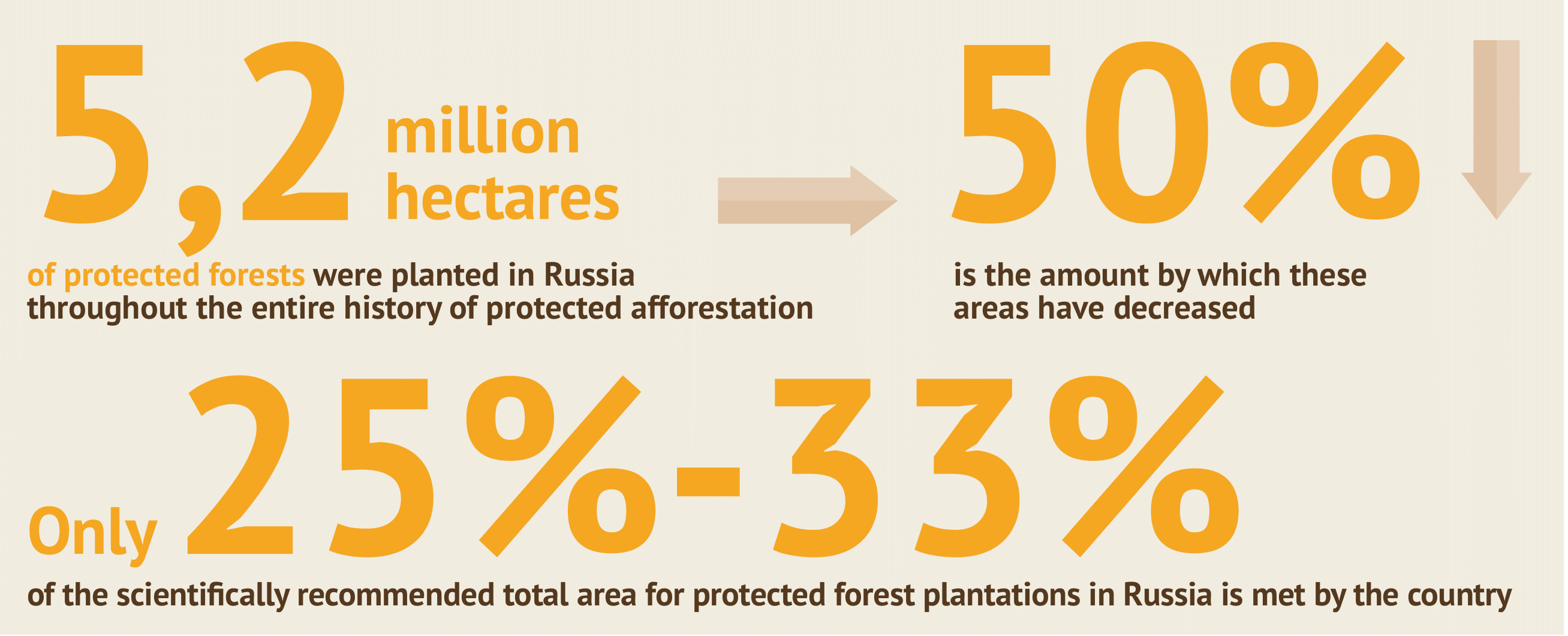
State programmes for sustainable forestry could help, but the ‘Strategy for Protected Afforestation in Russia’ developed by the Federal Research Center of Agroecology, Integrated Reclamation and Protective Forestry of the Russian Academy of Sciences has not yet been approved, and domestic forest legislation does not take many problems into account. The only exception is the recently approved Forestry Development Strategy of the Russian Federation until 2030. If it receives the necessary funding, one should expect an increase in the resilience of forest ecosystems.
A Risk-Free Agreement
Russia joined the UN Paris Agreement in 2019. A national target has been set for 2030 —greenhouse gas emissions should not exceed 70% of 1990 levels.
According to the latest official data (from a 2020 report), total net greenhouse gas emissions in Russia have fallen from 3.109 billion tonnes CO2 equivalent in 1990 to 1.629 billion tonnes in 2018 (down 48%), though the dynamics of greenhouse gas emissions and removals are not the same across sectors of the economy.
Will the national goal be achieved? Researchers from HSE University and RANEPA have answered this question by presenting greenhouse gas emission calculations for three possible scenarios of economic development in Russia up to 2050. The three scenarios are as follows:
Business-as-Usual Scenario (BAU)
Russia continues its economic and industrial development under the low-carbon measures already in place. Production is gradually modernised, low-carbon and renewable energy technologies are introduced, but at the expense of business, without additional support from the government.
Progressive Low-Carbon Development Scenario (CAP60)
Russia embarks upon a path of rapid economic growth, increases prosperity, and implements moderately active measures to introduce low- and zero-carbon technologies in key economic sectors — energy, industry, transport, housing, and energy utilities.
Economic Decarbonisation Scenario (CAP50)
Russia decarbonises its economy and reduces CO2 emissions per unit of GDP. Russia utilizes carbon-free energy sources on a large scale.
The scenarios lead to different levels of emissions, but the overall conclusion is the same: given estimates of carbon uptake by natural forestation (also derived from scenario projections), there will be reductions in greenhouse gas emissions by 2030 in all cases.
Russia does not run the risk of non-compliance with the ‘national contribution’ commitment to Paris Agreement 2030.
Moreover, by 2050, estimates show great potential for emissions reductions of up to 85% below 1990 levels.
Holding the Lead
Russia has enormous potential to reduce greenhouse gas emissions on a large scale and decarbonise its economy. The environmental, financial, technological, and, of course, scientific spheres present ample opportunities.
Take a study of the Arctic, which has both promising fuel deposits and threats of new climate disasters, for example. The Eastern Arctic Seas (EAS) and the Kara Sea contain more than 80% of all subsea permafrost with large reserves of hydrocarbons on a planetary scale, including gas hydrates — crystalline compounds formed from water and gas.
Gas hydrates are a potential source of fuel and, at the same time, pose the risk of releasing large, uncontrolled quantities of the greenhouse gas methane into the atmosphere. The methane is released from the sea depths and increases the surface temperature of the Earth.
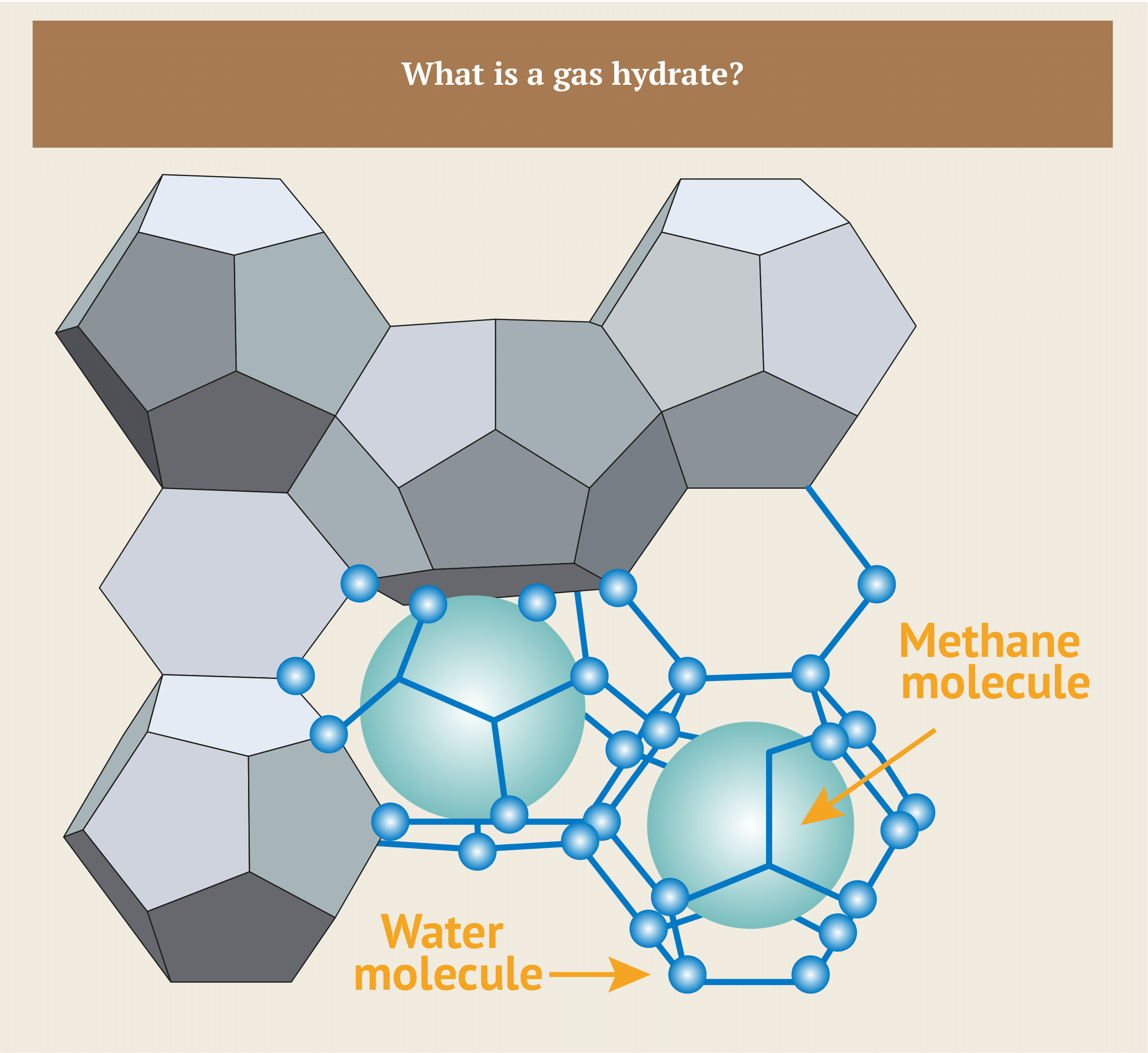
The release of methane from gas hydrates concentrated in permafrost on land and in the Arctic seas may contribute to the build-up of the greenhouse effect and accelerate climate change. Methane reserves in Arctic shelf hydrates now exceed the total amount of atmospheric methane by the hundreds.
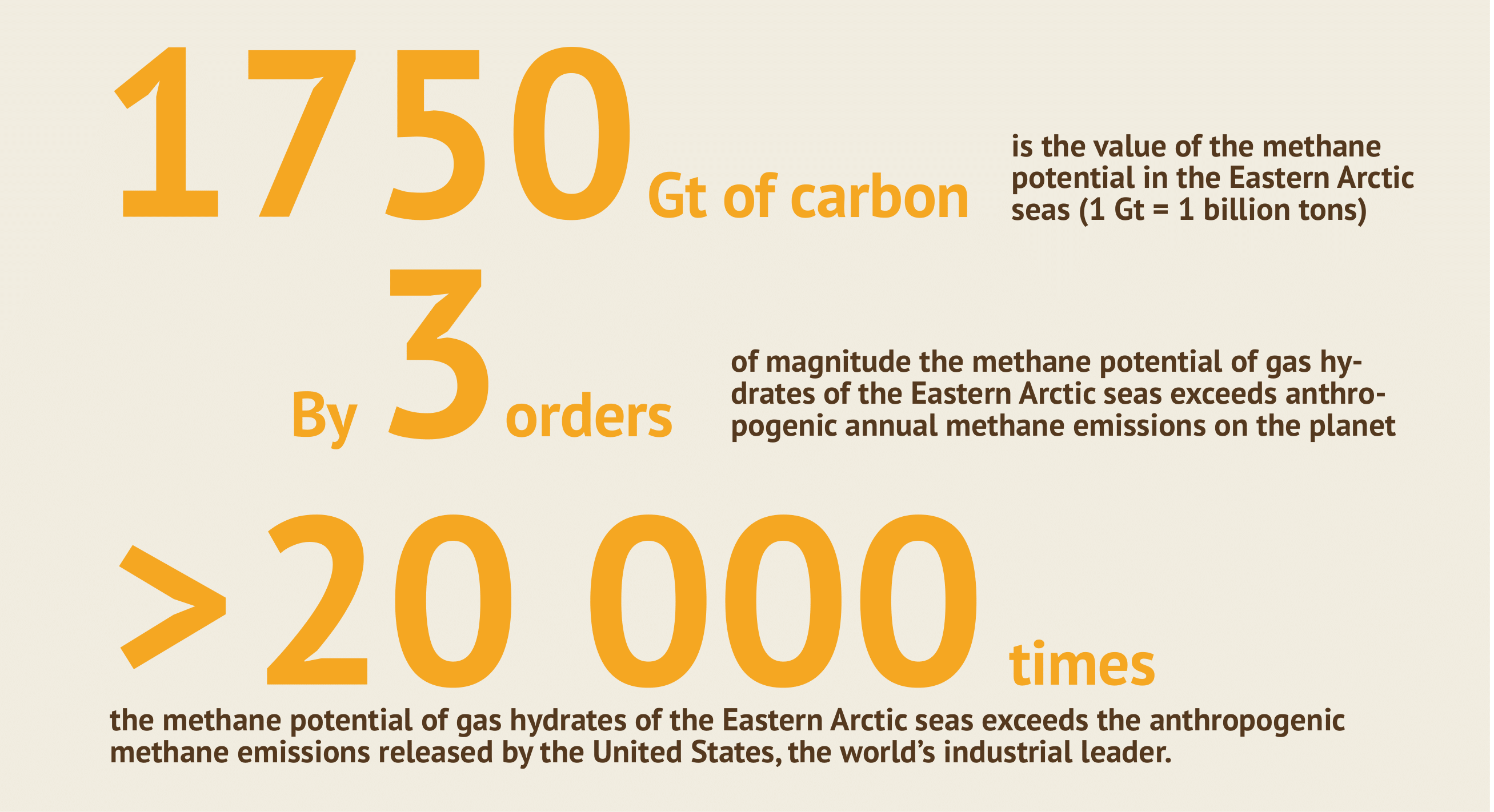
In turn, current and projected future climate change in Arctic marine and terrestrial ecosystems and the biogeochemical cycles of these systems have and will continue to have a major impact on the environment and the economy not only in Russia, but the world at large. The fuel and energy complex, the fishing and transport industries, the development of natural resources, and the lives of indigenous peoples of the North will all be impacted significantly.
This is of particular importance for Russia, 70% of whose territory contains permafrost in various forms. For example, the Eastern Arctic and Kara Seas (EAS) contain more than 80% of all subsea permafrost, as well as hydrocarbon reserves on a planetary scale, including gas hydrates.
It is estimated that the emission of even a small fraction (1-5%) of this methane potential could cost $80 billion per year in damages. And 90% of these costs would be shouldered by Russia. In such a situation, the importance of scientific research into the subsea permafrost-gas hydrate system cannot be overestimated.
Russian scientists are leaders in this field. They were the first to raise the issue of the progressive degradation of the subsea permafrost of the EAS, the condition of which determines the stability of hydrates and the extent of methane emissions.
In 2020, a report by HSE University’s Institute of Ecology, ‘Gas Hydrates: Their Role in Sustainable Development and Climate Transformation of the Arctic’, was submitted to the intergovernmental Arctic Council. The proposal is being considered with the support of the Russian Ministry of Foreign Affairs and the Ministry for the Development of the Russian Far East and Arctic. The paper proposes a new understanding of the climatic and environmental role of subsea permafrost degradation and the destabilisation of hydrates in terms of human development impact.
Understanding how and to what extent methane is discharged into the atmosphere due to the progressive degradation of subsea permafrost is a global challenge. For example, in 2008, a US national program was launched to identify and assess the processes responsible for rapid climate change by creating a scientific consortium of six of the most respected national laboratories (Argonne, Los Alamos, Lawrence Berkeley, Lawrence Livermore, Oak Ridge, and Pacific). The consortium identified four key types of possible rapid climate change, two of which are related to permafrost degradation on land and offshore with a focus on the destabilisation of methane hydrates in the Arctic Ocean.
As part of HSE University’s Human Capital Interdisciplinary Research Center, scientists from Russia and Sweden will conduct the largest study of the Arctic Ocean in history. The last successful example of international cooperation in 2020 was the world's only international expedition in the Arctic seas on the research vessel ‘Akademik Mstislav Keldysh’.
To maintain Russia’s position at the forefront of the study of subsea permafrost degradation and hydrate destabilisation in the context of human development, leading Russian scientists consider it advisable to form a national consortium for the study of the implications of permafrost degradation. The HSE Human Capital Interdisciplinary Research Center could serve as the host institution for such a consortium.
The primary expected outcomes of such a consortium are:
The creation of a data bank on the state of subsea permafrost to identify and track locations of massive methane discharge due to hydrate destabilisation, which is necessary to ensure the safety of offshore resource development and the use of the Northern Sea Route.
The assessment of the potential and risks of using Arctic gas hydrates for societal sustainable development; gaining new and unique knowledge about the mechanisms of subsea permafrost degradation.
The assessment of current and expected emissions of methane and other greenhouse gases into the atmosphere as a result of gas hydrate destabilisation and their impact on climate transformation.
Gas hydrate research is essential to forming a strategy for adapting to rapid climate change within a single generation.
This material is based on the report, 'Sustainable Development in a Pandemic: Natural Resources, Climate Change and Territorial Resilience' (in Russian).
Table of Contents:
‘Trends in the Integrated Development of Natural and Climatic Systems and Human Potential’ by L. Proskuryakova (HSE University).
‘Managing Territorial Resilience under Conditions of Global Climate Change’ by N. Kurichev (HSE University), A. Ptichnikov (Institute of Geography, RAS), A. Kotov (HSE University), V. Vinogradova (HSE University, Institute of Geography RAS), R. Gracheva (HSE University, Institute of Geography RAS), and E. Cherenkova (Institute of Geography RAS)
‘Scenario Projections of the Interaction of Socio-Economic, Natural and Climate Systems in Russia up to 2050’ by G. Safonov (HSE University), A. Stetsenko (HSE University), V. Potashnikov (RANEPA), A. Dorina (HSE University), Y. Safonova (HSE University), A. Semakina (HSE University), A. Sisonov (HSE University), and I. Frolov (HSE University)
‘Gas Hydrates: Their Role in Sustainable Development and Climate Transformation of the Arctic’ by I. Semiletov (HSE University), N. Shakhova (Tomsk Polytechnic University), B. Morgunov (HSE University)
Source: IQ
